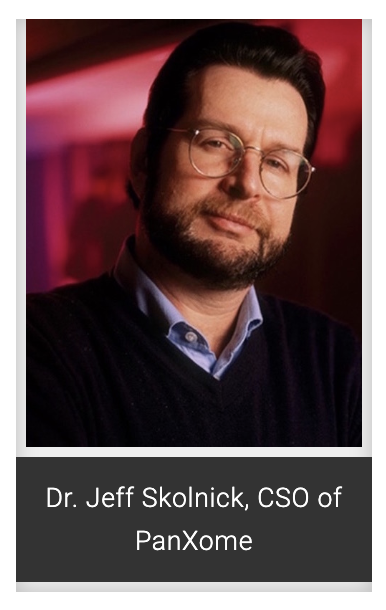 We are all familiar with the medicine commercials that profess a miracle cure only to spout off a litany of side effects at the end. Dr. Jeff Skolnick of PanXome set out to solve that problem. Dr. Skolnick joined Georgia Tech’s faculty approximately eleven years ago as the Director of the Center for the Study of Systems Biology Program. “The thought at the time,” said Dr. Skolnick, “that it should be a great university, not merely a great engineering school and one of the areas that they had identified at the time was Biology because it was becoming increasingly quantitative. And what do engineers do? They build devices! There was a very strong existing computer science program… so it was a natural next step.”
We are all familiar with the medicine commercials that profess a miracle cure only to spout off a litany of side effects at the end. Dr. Jeff Skolnick of PanXome set out to solve that problem. Dr. Skolnick joined Georgia Tech’s faculty approximately eleven years ago as the Director of the Center for the Study of Systems Biology Program. “The thought at the time,” said Dr. Skolnick, “that it should be a great university, not merely a great engineering school and one of the areas that they had identified at the time was Biology because it was becoming increasingly quantitative. And what do engineers do? They build devices! There was a very strong existing computer science program… so it was a natural next step.”
Dr. Skolnick has spent his career developing algorithms, which model proteins so that their function and relationship to diseases and drugs can be understood and accurately predicted.This is how PanXome was born. “You know how science is, it’s sort of like things don’t work, they don’t work and then all of the sudden it starts to take off and you’ve got to get into the exponential part of the growth curve if you’re lucky.” PanXome is one of the things that does work. Dr. Skolnick describes the complicated process as looking at craters on the moon. “Well if you imagine these small molecules binding into these pockets, like craters on the moon you think, you fit into the crater and life is great. But if every crater is special it should be one molecule one target, like a Swiss watch.” Dr. Skolnick and his team discovered that this presumption was not necessarily true. Instead, PanXome is able to show that there are only 500 small molecule binding pockets in nature. “So this is a wonderful opportunity then,” says Dr. Skolnick, “If you have one molecule you don’t want to simply look at the protein of interest, you want to look at everything else as well. Whom am I interacting with that I want and whom am I interacting with that I don’t want?”
This breakthrough of this predictor structure has several astounding implications, one of which is that it will allow for fewer screening runs with a much higher rate of return. “Rather than thousands, or tens of thousands, or millions we screen between 50 and 100 molecules, and we know when it’s going to work. I may not be able to tell you which of these 50 are going to be the magic ones, but I know if there’s no point or I have a pretty good guess – maybe one in five is going to hit.” With PanXome’s screening process, medicinal chemists can predict which side effects their drug will cause, which ones will prevent them from receiving FDA approval, and allow them to target the proteins that will not have dangerous side effects.
Though this may seem small to those outside of the pharmaceutical industry, this relieves a major source of pain. Not only does it decrease the amount of time spent in testing, but it increases the chances that a drug will pass safety. The first rule of drug creation, says Dr. Skolnick, is do no harm. “Obviously pharmaceutical companies work very hard to mitigate this risk,” says Dr. Skolnick, “but in spite of that one in three drugs will fail safety. So if you had a way of de-risking or saying this is one that is very likely to fail safety and this is one that is probably going to pass it.” Because PanXome can look across the majority of the human exome they can suggest which molecules are going to pass safety with an 80% success rate.
As they continue to grow, PanXome is exploring other uses for their algorithm, including diagnostics, but Dr. Skolnick’s main focus remains in predicting side effects and efficacy of new drugs. To learn more about their impressive breakthroughs, please visit their website.